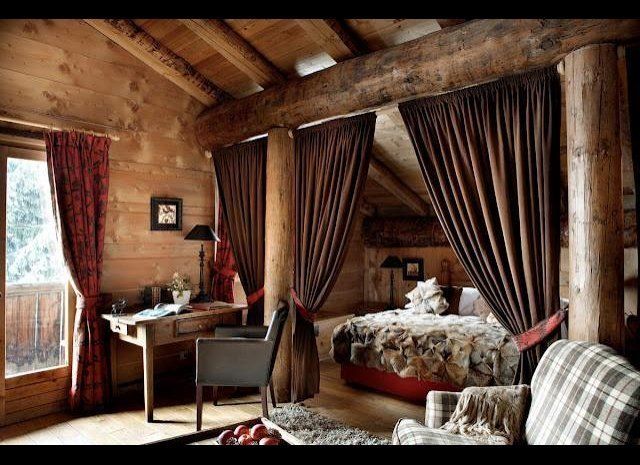They say that trends follow our direction of thought, expressing the mood of the present and the style of the future. Interior design like all other creative fields is sensitive to a world undergoing a huge transformation and realignment under a recessionary economy; during this global change a new trend has emerged to fit these times of austerity. 'Rough Luxe' shows how interior design adapts to its surroundings, reacting to the new social, economical and environmental situation, Rough Luxe is a trend completely borne out of these redefined values.
So what is Rough Luxe? Simply put, it is for those who treasure luxuries but also take pleasure in items that have stood the test of time. It is for people who prefer the beauty of natural imperfection to flawless processed perfection. It is not to be achieved on purpose, as is the case with artificially distressed furniture or bleached fabrics. The point is to embrace what is already battered, faded or tarnished, and favor it precisely for its timeworn state. The Rough Luxe trend is a new interpretation of luxury as a moment in time and an enriching personal experience, it goes beyond consumption and ownership of expensive objects.
While the concept has boomed during the recession it has existed for some time; one of key figures who helped it take-off is architect and designer Rabih Hage, who together with Kurt Engelhorn, whose lifestyle inspired the name, opened the Rough Luxe hotel in London in 2008. "It is all about authenticity. This is the real definition of Rough Luxe," Hage explains. The hotel name turned into an umbrella term for everything revolving around authenticity and experience, rarity and outstanding quality. Today, the Rough Luxe network includes hotels, bars, restaurants, shops and products that focus on the experience, appreciation and the intrinsic value of art, culture and objects.
Trends, these unique and intriguing changes that affect most of us, are social processes that start as a reaction to what is mainstream, explains Henrick Vejlgaards, a pioneer in trend sociology. The Rough Luxe trend is a sort of anti-minimalistic and anti-perfectionist movement whose mantra is "authenticity."
As the Wall Street Journal wrote back in 2009,
"Rough luxe may not have been occasioned by the current economic recession -- the movement was on a roll before November 2008CHK -- but it does seem to resonate with it."
It was accepted as a suitable new definition of luxury living. The Future Laboratory predicted then that authenticity is going to be the next big thing and in their April 2009 trend report, entitled Inspire: Rough Luxe, they stated that it "celebrates a heavy rawness erring on the artisanal. Because of the downturn, consumers are taking a bit longer to think about a purchase and they want to buy into a story."
Looking back, they seem to have been right. The style gained momentum and still enjoys a substantial popularity. A book about it was published last year. Furniture companies also embraced it, putting out collections such as West Elm's new fall collection. The Rough Luxe design ethos has spread throughout the design world, turning into an extremely influential trend only four years after it was formulated as a style. It is seen as part of the future too - the WGSN -homebuildlife pointed out the Rough Luxe hotel as a perfect example of their autumn/winter 2013/14 macro trend, 21st Century Romance: in each inch of the hotel, contemporary craftsmanship meets distressed design.
In addition to factors like recession and along with the backlash against minimalism, Rough Luxe also resonates with a movement towards more personalized interiors. It values objects that tell stories by retaining elements or references to their past. Additionally, it's preference for natural textures and eco-friendly materials reflects a conscientious use of resources which corresponds with the growing trend for green design.
But is Rough Luxe economical in these economically 'rough' times? The short answer is "no." The luxury brands are alive and sales are thriving but what has changed is the style and definition of luxurious living. Official statistics from Verdict Research's report Global Luxury Retailing speak clearly:
"In 2010 the luxury goods market recovered from downturn with a growth rate of 9.8% and robust growth continued in 2011 with retail expenditure on branded luxury products forecast to expand by 17.3%... Affluent consumers are rekindling their love for premium brands, and those with new-found wealth are discovering them for the first time."
Verdict forecasts that the market will grow by 65% between 2010 and 2015. Euromonitor International's Passport: Luxury Good's market research database also sees the global luxury market expanding by more than 7% in 2012.
In today's austere world, overt luxury (or the perception of it) has become mildly distasteful. Today the luxury brands meet the demands of consumers who are more socially, environmentally and ethically aware. There is an ever-growing focus for these companies to be social responsible, support 'green design', create 'responsible luxury' and 'sustainable luxury'... whatever the cost. In that sense, Rough Luxe could very well be a temporary fad, a passing trend that is a result of a very specific global environment.
What do you think? Is Rough Luxe here to stay or will fans of luxurious interior design soon get tired of roughing it?
